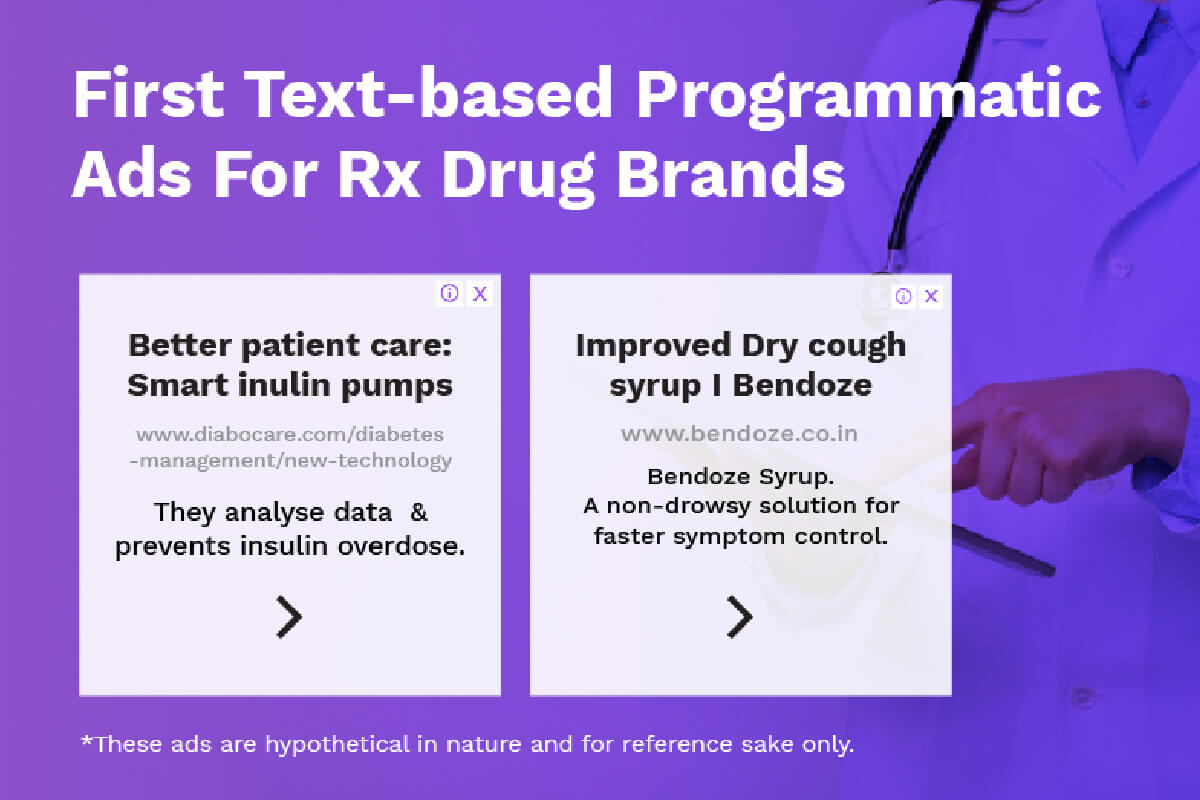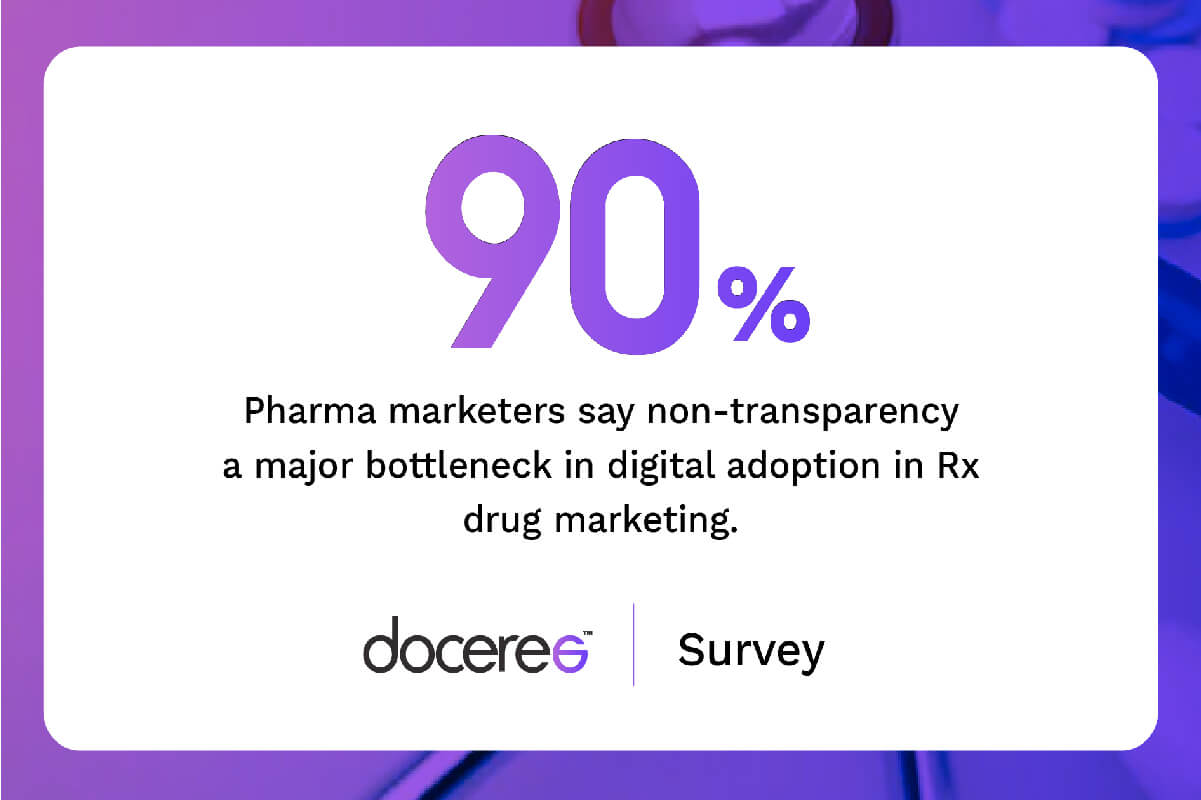Doceree boss felt things were back to normal after scribbling brainstorming ideas on office whiteboard





From the early days of the printing press, radio, and billboards that enabled ads to circulate widely, advertising has evolved alongside technology, refining the ways in which advertisers can target audiences. With the dawn of the internet era, online advertising became a new marketplace to reach potential buyers. At first, it came in the form of pop-ups and banner ads on specific websites, with pricing negotiated manually with site owners. As technology began to influence our world, ad networks, and ad exchanges, began to appear as a place to buy and sell ads. And eventually, a more efficient way of buying and selling ads arrived that allowed companies to understand the success of their advertisements.
Programmatic advertising can be broadly defined as purchasing digital advertisements automatically, leveraging the algorithms and the machines, thus removing the human factor from the ad buying process, making the purchasing of digital space faster and cheaper. Today, advertisers are capable of targeting highly specific healthcare professionals. Ads are priced, sold, and bought via a real-time bidding auction that happens in less than 100 milliseconds.
Programmatic platforms are platforms like ours that help with programmatic advertising solutions. Programmatic advertising platforms are part of the advertising ecosystem, where each part is responsible for its own stage of the process. The result of their collaboration altogether serves for marketing, analytical, and operational purposes, thus satisfying both publishers and advertisers.
All platforms are set in advance to simultaneously perform their job, as per the intent of programmatic advertising, to reach users from a specific target audience with a personalized message, just at the right time. These platform types include DSPs, DMPs, SSPs, and Ad Exchanges. Let’s look at kinds of programmatic marketing platforms to get a better idea of what each one does and who it’s for.
The ad exchange is where the DSP and SSP come together for programmatic advertisements to be bought and sold. Some ad exchange systems, like Doceree’s, combine DSP, SSP, and DMP in one so that everything’s provided for both advertisers and publishers under one roof.
A demand-side platform is a type of programmatic platform for the advertiser side of the process. The platform enables an advertiser (pharma brands in case of healthcare) to place or buy ad inventory in the open market. A DSP stores third party data and user-profiles and combines information with bids from advertisers. The DSP healthcare decides which ad to serve and where and when the audience lands on the webpages. The pixel that publishers include on their website provides data to create audience segments, sending the information to the platform. Advertisers benefit from the right placement of the ad while publishers profit from the highest bidder winning.
The supply-side platform is used by digital publishers to sell, manage, and optimize online advertising space. SSP has a dashboard with in-built publisher controls. It helps them manage ad inventory (position, size, format, etc.), the price per impression, and other campaign details. SSP healthcare is programmed to maximize the value that publishers receive from ads.
A data management platform is an independent platform that collects, manages, analyzes, and activates data. The platform provides comprehensive user profiles to advertisers so that the data can be used in a programmatic algorithm to target the right audience. Advertisers use the insights in combination with a DSP, but publishers use them along with an SSP.
Now, as we have understood different platforms in details, let’s see how programmatic trading platform benefits advertisers and publishers:
Before programmatic advertising, it was challenging for advertisers to access ad inventory. Automation solved the problem by making it much easier to understand and buy ad inventory. Following are the benefits of programmatic advertising in the case of advertisers:
With the right tools and technology, programmatic advertising provides publishers the opportunity to monetize their platforms by hosting ads relevant to them. They can also access arrangements that bring them greater revenues through distinct bidding types. Following are the benefits of programmatic advertising in the case of publishers:
The kind of granularity offered by programmatic advertising is tough to ignore. Those who are already moving in this direction have to step up their game as for both advertisers and publishers, technology could be a big game-changer.
It helps in increasing efficiency. For Pharma companies, the whole process of healthcare programmatic digital media buying is to streamline the process and have a more significant outreach in lesser time.

The past 8 years have seen a rise in Point of Care platforms being used for marketing purposes by Pharmaceutical and Life Science brands. This includes messaging throughout the EHR workflow, ePrescribing, Telehealth, and secure messaging platforms.
In a few cases, these were platforms offered to Physicians free of charge or at discounted rates that were supplemented by the advertising revenue. However, today this has expanded to include paid platforms as more and more Physicians are looking to get as much of their clinical information from one place. There are more than 650 Point of Care platforms in the US, and more than half of these currently accept Pharma-sponsored messaging.
Platforms that currently do not offer this type of outreach to Physicians offer many of the same reasons for not placing messages, including:
Despite these worries, Point of Care platforms can be rest assured that all of these concerns can be addressed.
Messaging placed in Point of Care platforms follow strict guidelines to ensure they don’t distract and make the platforms look like a blog or news site. In addition, click to action (CTA) will very rarely take a Physician outside the platform and away from their patient care.
Pharma is not trying to force their products on the Physicians and will never tell them what to do or question the work they are already doing. These messages are designed and written only to inform and educate about new products, new indications, or provide disease awareness. In some instances, these messages can provide copay cards or coupons in order to help get patients onto therapy and make them remain adherent to their prescribed treatment.
Legal concerns can easily be put to rest by providing updates to the End User License Agreement (EULA) as well as providing Physicians opportunities to opt out of the messaging on a platform, brand, or manufacturer level. At no point are patient or Physician details provided to the agencies or brands in order to remain HIPAA and GDPR compliant.
The landscape for marketing to Physicians is constantly changing and the more opportunities brands have to precision target the right Physician at the most opportune time in the workflow i.e. when they are seeing the patient, the better for patient outcomes. Doceree has perfected the way brands can utilize Point of Care Platforms for reaching their target audience with a professional look that doesn’t encroach on legal or privacy concerns.
The Point of Care landscape is changing rapidly, and marketers need to find new, more efficient, and cost-effective ways to reach their HCP targets. To learn more about Doceree Point of Care and all of our product offerings, contact Kamya Elawadhi at Kamya.Elawadhi@doceree.com .
